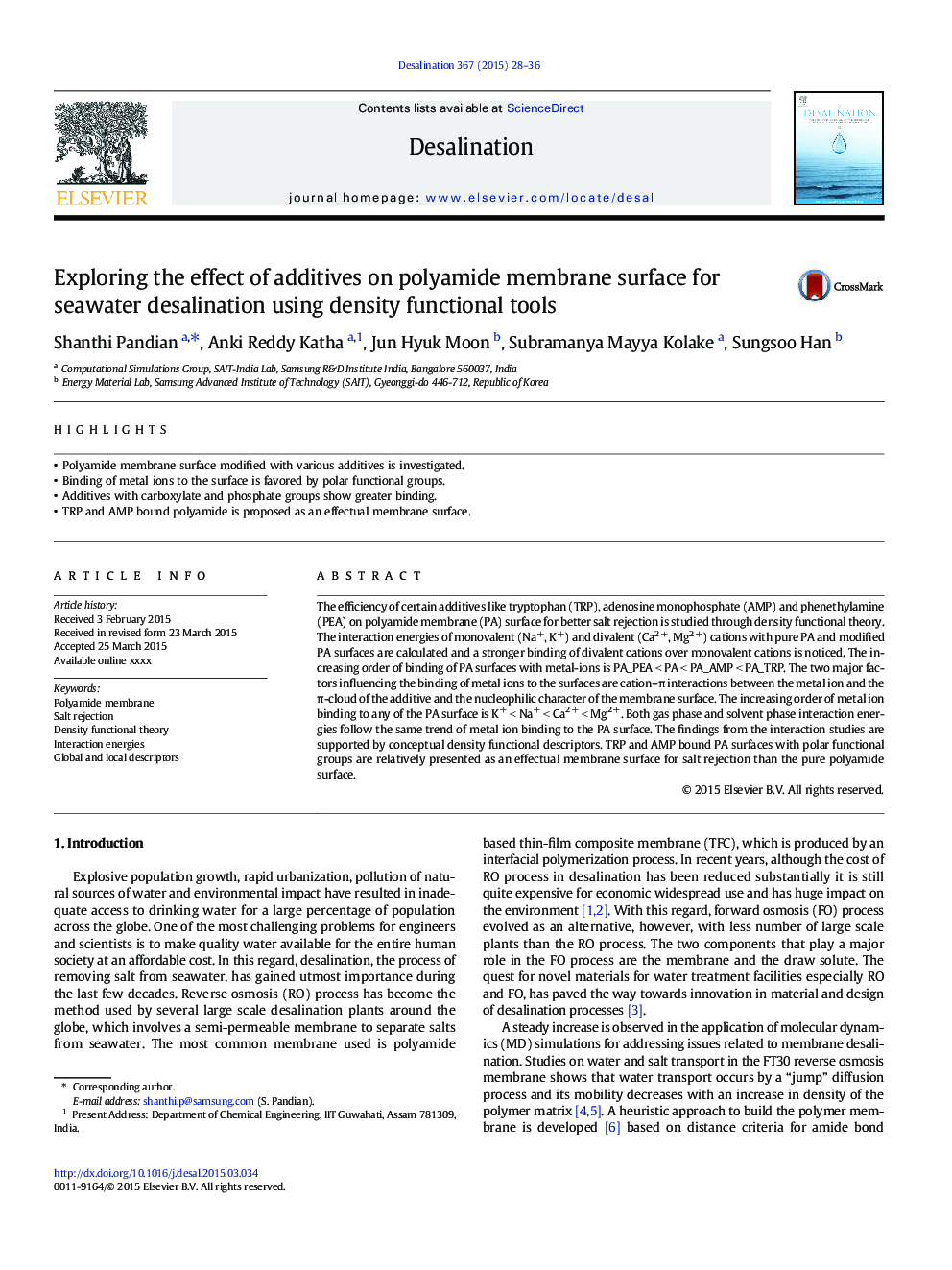| Article ID | Journal | Published Year | Pages | File Type |
|---|---|---|---|---|
| 623150 | Desalination | 2015 | 9 Pages |
Abstract
The efficiency of certain additives like tryptophan (TRP), adenosine monophosphate (AMP) and phenethylamine (PEA) on polyamide membrane (PA) surface for better salt rejection is studied through density functional theory. The interaction energies of monovalent (Na+, K+) and divalent (Ca2Â +, Mg2Â +) cations with pure PA and modified PA surfaces are calculated and a stronger binding of divalent cations over monovalent cations is noticed. The increasing order of binding of PA surfaces with metal-ions is PA_PEAÂ <Â PAÂ <Â PA_AMPÂ <Â PA_TRP. The two major factors influencing the binding of metal ions to the surfaces are cation-Ï interactions between the metal ion and the Ï-cloud of the additive and the nucleophilic character of the membrane surface. The increasing order of metal ion binding to any of the PA surface is K+Â <Â Na+Â <Â Ca2Â +Â <Â Mg2Â +. Both gas phase and solvent phase interaction energies follow the same trend of metal ion binding to the PA surface. The findings from the interaction studies are supported by conceptual density functional descriptors. TRP and AMP bound PA surfaces with polar functional groups are relatively presented as an effectual membrane surface for salt rejection than the pure polyamide surface.
Related Topics
Physical Sciences and Engineering
Chemical Engineering
Filtration and Separation
Authors
Shanthi Pandian, Anki Reddy Katha, Jun Hyuk Moon, Subramanya Mayya Kolake, Sungsoo Han,
